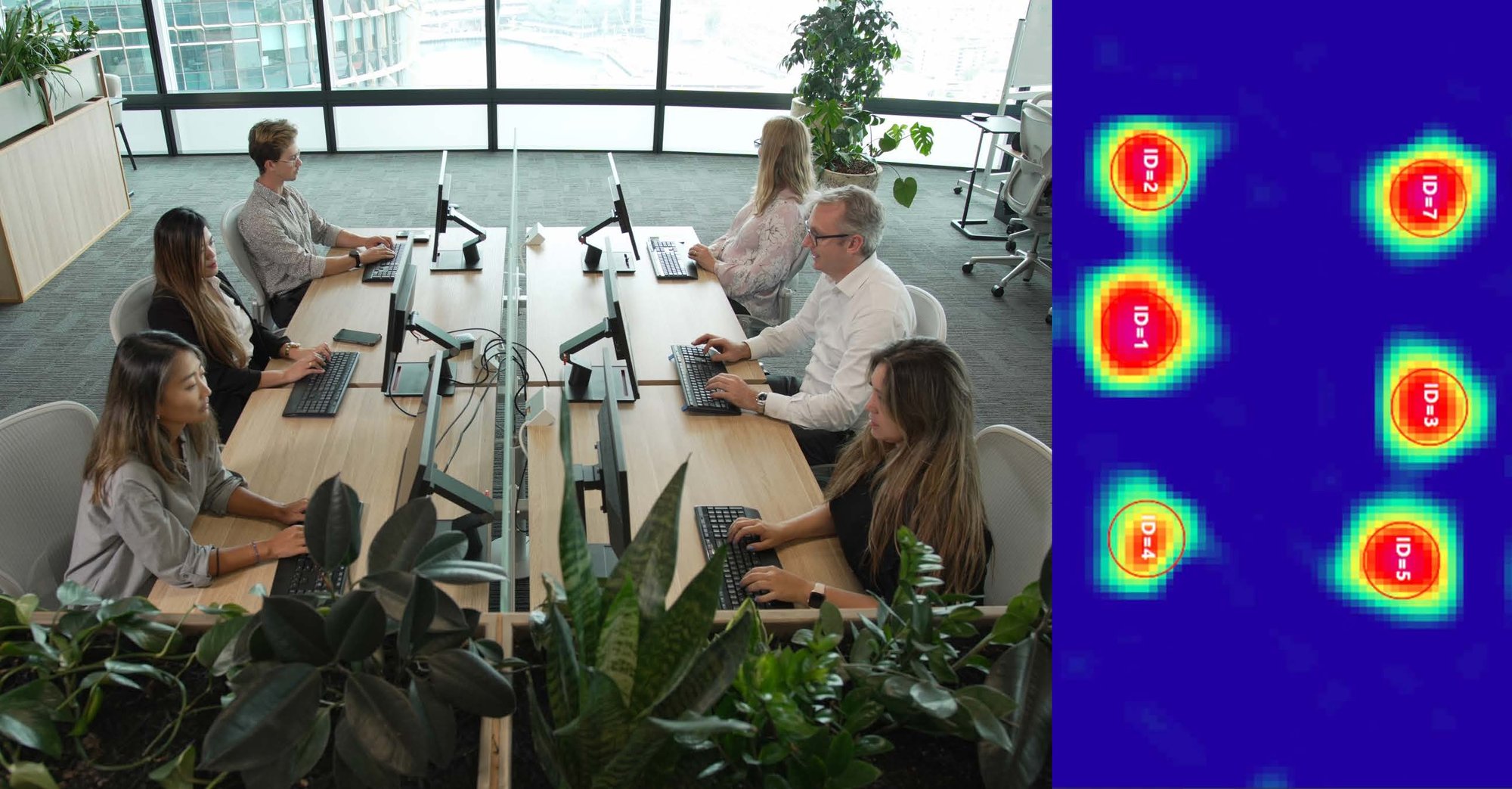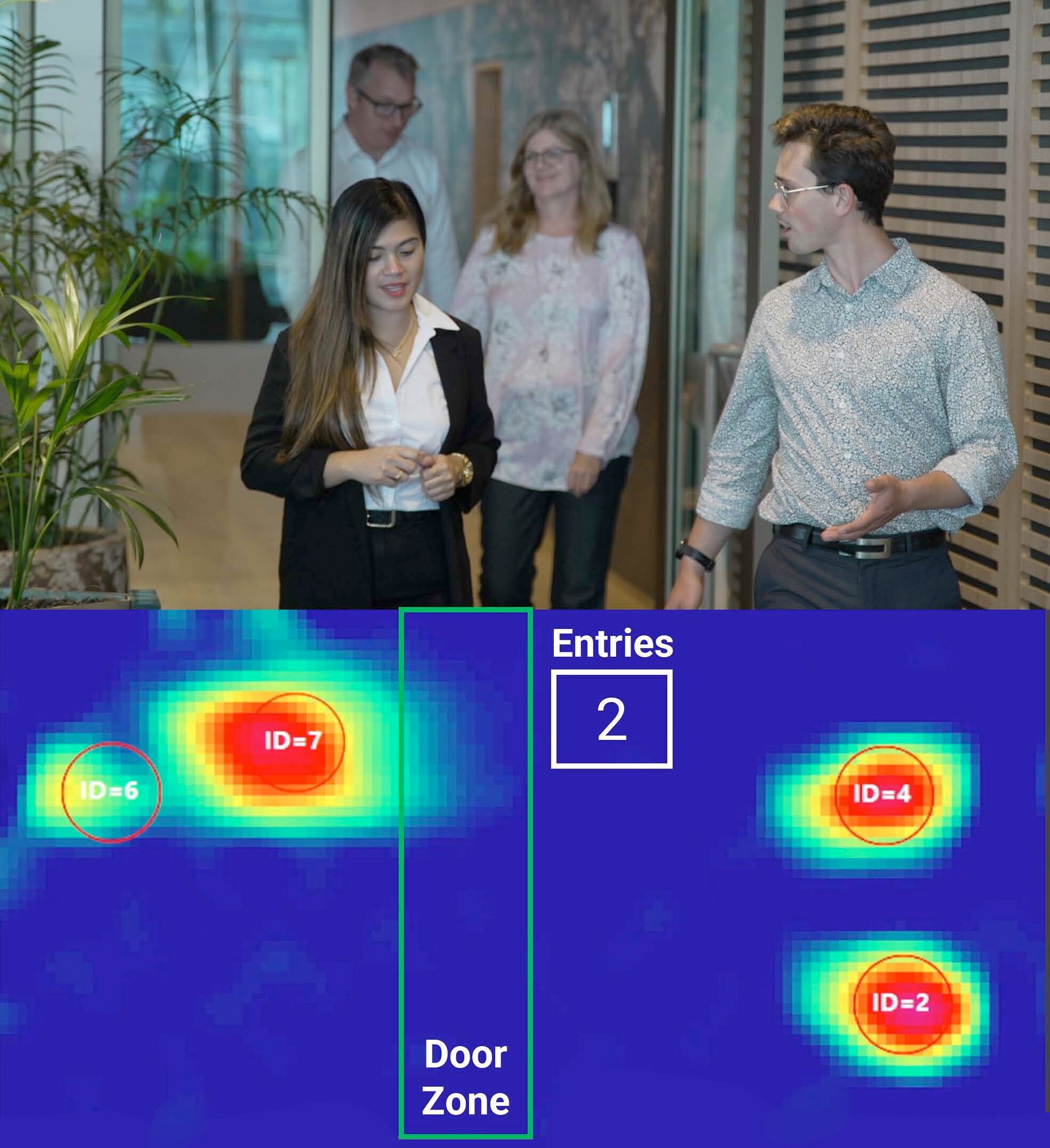People Counting Technology
People counting (PC) technology counts the number of people within a space. This is achieved through advanced thermal sensing.
This technology can identify and track individuals as they enter, leave, or move around a space, generating real-time data about the number of people and their distribution.
BubblyNet uses a privacy-safe native low-resolution sensor (28 x 15 pixels) with which no personally identifiable information (PII) is captured, ever.

Greater Precision and Accuracy
While Passive Infrared (PIR) Occupancy Sensing uses a similar technology, PC allows for many more functionalities. PIR is the most affordable and common technology to detect presence and control lighting, HVAC, and detecting unauthorized entry. PC detects the number of people, has much higher accuracy (e.g., small movements), and allows greater scalability to larger, dynamic spaces.
Occupancy sensors are limited to detecting movement or heat, which can lead to false positives or negatives. For instance, a person sitting still in a conference room may go undetected. In contrast, people counting technology accurately counts individuals regardless of their movement, providing precise data about actual usage.
Advanced Space Utilization Insights
People counting allows organizations to analyze how spaces are being used over time. Insights can include:
- Peak usage times of meeting rooms or common areas.
- Underutilized spaces that could be repurposed.
- Occupancy density for health and safety compliance (e.g., social distancing requirements).
This data-driven approach helps optimize office layouts, reduce wasted space, and improve workplace efficiency.
Energy Efficiency and Sustainability
While occupancy sensing can reduce energy consumption by controlling lighting and HVAC based on presence, people counting goes a step further by tailoring systems based on the exact number of occupants. For example:
- HVAC systems can adjust ventilation rates dynamically based on the number of people in a room.
- Lighting levels can adapt to the number of occupants, reducing unnecessary energy usage.
This fine-tuned control minimizes energy waste and supports sustainability goals.
Enhanced Safety and Compliance
In scenarios where safety is paramount (e.g., fire evacuations, building code compliance), knowing the exact number of people in a space can be critical. People counting technology ensures:
- Accurate head-counts during emergencies.
- Compliance with occupancy limits to prevent overcrowding.

Data-Driver Decision Making
Businesses, retail stores, and public facilities benefit from the rich analytics provided by people counting systems. For example:
- Retail stores can optimize staffing based on foot traffic patterns.
- Public transport systems can better manage capacity and scheduling.
- Workplaces can implement flexible desk policies based on real-time usage data.
Improved Wellbeing and Comfort
By accurately understanding occupancy levels, people counting technology helps maintain optimal air quality, temperature, and lighting levels, contributing to better occupant comfort and wellbeing. This is especially important in smart offices, healthcare facilities, and educational institutions where productivity and comfort are linked.
Use Case Scenarios
Smart Offices. People counting helps optimize meeting room availability, track desk usage, and enhance air quality by dynamically adjusting ventilation based on real occupancy levels.
Retail Spaces. Retailers use people counting to monitor customer traffic, optimize store layouts, and manage staffing levels, leading to better customer service and operational efficiency.
Healthcare Facilities. Hospitals and clinics use people counting to monitor patient flow, optimize waiting room layouts, and ensure compliance with safety protocols.
Public Transportation. Subway stations, buses, and trains benefit from people counting by tracking passenger density, improving schedules, and maintaining safety during peak times.